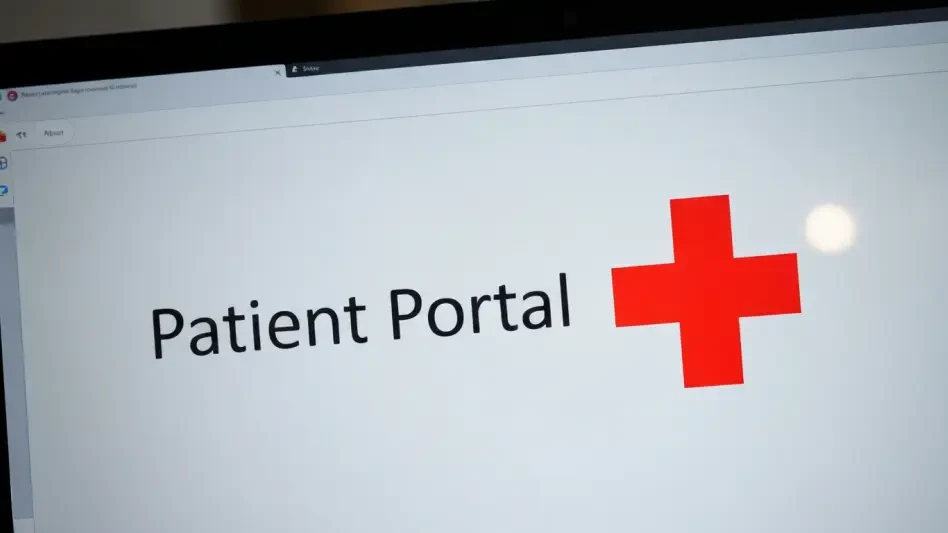Introduction to the Digital Healthcare Challenge
In an era where digital interactions dominate daily life, a staggering 65 percent of patients report feeling overwhelmed by the coordination required to manage their healthcare, painting a vivid picture of the disconnect between current patient portal offerings and the seamless, user-friendly experiences that healthcare consumers now demand. As digital tools become central to patient engagement, healthcare organizations face mounting pressure to transform static portals into dynamic platforms that mirror the sophistication of consumer apps. This report delves into the state of patient portals in 2025, exploring whether these critical tools are equipped to meet heightened expectations and outlining the path forward for an industry at a digital crossroads.
The Current State of Patient Portals in Healthcare
Patient portals, designed as digital gateways for individuals to access healthcare information and engage with providers, have become integral to modern medical systems. Initially developed to provide secure access to medical records, test results, and communication with clinicians, these platforms have evolved into essential tools for managing appointments and prescriptions. Their widespread adoption across hospitals and clinics reflects a broader shift toward digitization, driven by the need for efficiency and transparency in healthcare delivery.
Key players, including electronic health record (EHR) providers and major healthcare organizations, have shaped the development of these portals, often integrating them with broader systems for data management. Technological advancements, such as cloud computing and mobile accessibility, have further expanded their capabilities, enabling patients to interact with their care plans from anywhere. However, the pace of innovation varies, with some portals lagging behind in user experience despite the availability of cutting-edge tools.
Compliance with regulations like HIPAA remains a cornerstone of patient portal design, ensuring that data security and privacy are prioritized. These standards mandate strict protocols for protecting sensitive information, influencing how portals handle everything from user authentication to data sharing. As the industry navigates this balance between accessibility and safeguarding, regulatory frameworks continue to define the boundaries within which technological progress must operate.
Evolving Patient Expectations and Market Dynamics
Key Trends Shaping Patient Engagement
The landscape of patient engagement has undergone a profound transformation, accelerated by the reliance on telehealth and virtual care following global health challenges. Patients now expect digital interactions with healthcare providers to be as intuitive and responsive as their experiences with consumer technologies. This shift has redefined the role of patient portals, pushing them beyond mere information repositories to platforms that must facilitate active participation in care.
Consumerization of healthcare stands as a dominant trend, with individuals demanding the same level of seamlessness found in retail or entertainment apps. This expectation extends to features like real-time updates, easy navigation, and personalized content that reflects individual health needs. Emerging technologies, such as artificial intelligence (AI) and predictive analytics, are also reshaping portals by enabling tailored recommendations and proactive health alerts, setting a new benchmark for engagement.
Additionally, the demand for integrated and proactive solutions continues to grow, as patients seek tools that consolidate their healthcare journey into a single, cohesive experience. From managing chronic conditions to accessing financial information like insurance eligibility, the modern healthcare consumer desires a portal that anticipates needs and delivers actionable insights. This evolving mindset underscores the urgency for healthcare systems to adapt to a more connected and responsive digital environment.
Market Insights and Growth Projections
Despite the progress, data reveals significant dissatisfaction with existing patient portals, with over half of surveyed patients believing that better digital navigation could improve health outcomes. Challenges in coordinating care, such as fragmented data across platforms, remain a persistent frustration, highlighting the gap between current functionalities and user needs. These insights point to a critical opportunity for improvement in how portals serve their audience.
Looking ahead, the adoption of digital healthcare solutions is projected to grow substantially from 2025 to 2027, driven by increasing smartphone penetration and familiarity with virtual tools. Forecasts suggest that patient portal usage will expand as more individuals rely on these platforms for routine interactions with providers. This growth trajectory is fueled by both technological advancements and a cultural shift toward digital empowerment in managing personal health.
The market outlook indicates that consumer expectations will continue to drive innovation, with a focus on creating portals that offer meaningful engagement rather than just basic access. As patients prioritize providers with superior digital experiences, healthcare organizations must invest in solutions that address current pain points while anticipating future demands. This competitive dynamic is poised to reshape the industry, rewarding those who can deliver on the promise of a truly consumer-centric portal.
Challenges in Meeting Current Patient Portal Expectations
Many patient portals remain static in nature, lacking the dynamic, user-centric features that modern healthcare consumers expect. Often functioning as simple data repositories, these platforms fail to provide interactive elements or intuitive navigation, leading to a disjointed user experience. This limitation is particularly evident in areas like care coordination, where patients struggle to piece together information from multiple sources.
Technological hurdles further complicate the situation, with the integration of disparate data systems posing a significant barrier to seamless functionality. Inefficiencies in basic features, such as appointment scheduling, persist despite the availability of data that could streamline these processes. Such shortcomings not only frustrate patients but also burden providers, who must navigate workaround solutions to meet basic needs.
Addressing patient frustration requires a rethinking of portal design to prioritize empathy and personalization in digital interactions. Strategies like adopting intuitive interfaces and leveraging existing data for automated reminders or scheduling can significantly enhance usability. By focusing on these improvements, healthcare organizations can begin to bridge the gap between current offerings and the sophisticated experiences that patients now demand.
Regulatory and Compliance Considerations for Patient Portals
The regulatory landscape governing patient portals is anchored by stringent laws like HIPAA, which set rigorous standards for data privacy and security. These regulations ensure that sensitive health information remains protected, mandating robust encryption and access controls within digital platforms. Compliance with such frameworks is not just a legal obligation but a critical factor in building trust with users who rely on portals for confidential interactions.
Beyond current mandates, the potential for evolving regulations looms large, with possible updates to security protocols or interoperability standards on the horizon. Such changes could necessitate adjustments in how portals manage data sharing or integrate with other systems, adding layers of complexity to development efforts. Staying ahead of these shifts requires proactive planning and a commitment to aligning innovation with legal requirements.
Balancing technological advancement with adherence to strict compliance standards presents an ongoing challenge for the industry. While the push for cutting-edge features drives progress, it must be tempered by the need to safeguard patient information at every turn. This delicate equilibrium shapes the design and deployment of patient portals, ensuring they remain both functional and trustworthy in an increasingly digital healthcare environment.
The Future of Patient Portals: Innovations and Opportunities
Envisioning the next generation of patient portals involves creating platforms that are fully integrated, proactive, and personalized to individual needs. Integration means unifying fragmented data sources into a single, accessible hub, eliminating the silos that currently disrupt the healthcare journey. Such a cohesive approach promises to simplify interactions for patients navigating complex care plans.
Proactivity and personalization are equally vital, with technologies like generative AI poised to revolutionize portal capabilities. By harnessing predictive analytics, portals can anticipate health needs and deliver tailored insights, such as reminders for preventive screenings. Personalization, supported by AI, can replicate the individualized attention of in-person visits, fostering a deeper connection through digital means.
Market disruptors, including new entrants focused on consumer-centric solutions, are likely to challenge established players, spurring innovation across the sector. Growth areas such as predictive health insights and tools that emulate face-to-face care experiences offer significant potential. Influenced by global trends and shifting patient preferences, the evolution of patient portals will hinge on the ability to adapt to a rapidly changing landscape, delivering value through both technology and empathy.
Reflecting on Findings and Future Steps
Looking back, this report highlighted the pressing need for patient portals to evolve beyond static tools into dynamic, consumer-driven platforms. The analysis revealed widespread dissatisfaction with current functionalities, driven by a mismatch between patient expectations and digital offerings. Trends like the consumerization of healthcare and the rise of advanced technologies underscored the urgency for transformation.
Moving forward, healthcare organizations must prioritize actionable strategies to address these gaps. Adopting an outside-in perspective to understand patient interactions with digital systems proved essential in identifying pain points and opportunities. Investing in integrated platforms that leverage AI for personalized and proactive care emerged as a key solution to enhance engagement.
As the industry progresses, the focus shifts toward fostering seamless digital journeys that empower patients as active participants in their health. By embracing innovation and maintaining a steadfast commitment to compliance, providers can redefine the role of patient portals. This journey, rooted in understanding and meeting consumer needs, paves the way for improved satisfaction and better health outcomes in the digital age.









